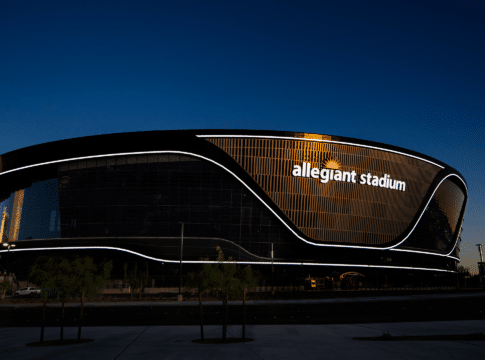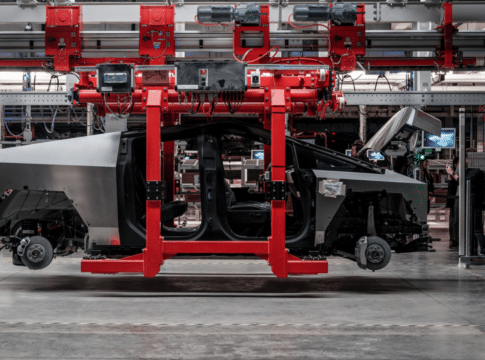The First-Ever Green Superbowl: Powered by 100% Renewable, Carbon-free Energy (CFE)
For the first time in Super Bowl history, the massive power needed to host the Big Game over the four-hour contest came from a Nevada solar farm. The enormous Arrow Canyon Solar Project, owned by local utility NV Energy, powered the full game’s estimated 28 megawatt hours during this year’s Super Bowl.
In July of 2023, Allegiant Stadium was awarded LEED Gold Certification by the U.S. Green Building Council. NZero, the first a climate accountability company deploying real-time emissions data collection, independently quantified and verified Allegiant Stadium’s emissions across various scopes for their sustainability initiatives and helped build the roadmap for its net zero goals.
RELATED: Xpansiv Acquires SRECTrade – Solar Renewable Energy
Allegiant Stadium and the Las Vegas Raiders built in highly innovative design features, such as solar panels and energy-efficient lighting, further reducing the stadium’s environmental impact. And renewable energy is not the only sustainability measures the group have taken implementing other initiatives as well including:
Food Scrap Collection
Grass Clippings Collection
Rubber Pellet Recycling
Waste Diversion
Understanding the Environmental Impact of Super Bowl LVIII
The Super Bowl is more than just a game; it’s a massive event with far-reaching economic and environmental effects. Beyond the excitement of football, it’s crucial to examine its environmental footprint, including carbon emissions and energy consumption and environmental impact of Super Bowl LVIII in detail.
Benjamin Leffel, an assistant professor of public policy sustainability at the University of Nevada, Las Vegas, highlighted the environmental impact of the Super Bowl. He said that:
“The emissions levels of a mega-event like this from air traffic, and the energy use is at least double in a day than it would be on average.”
The world sport sector is estimated to be responsible for about 50-60 billion tonnes of CO2e per year according to Rapid Transition Alliance, a network of international organizations tackling the climate emergency. Sporting events are responsible for massive levels of emissions like carbon-heavy power-hungry stadiums, unrecyclable garbage, and all the energy required for television and web broadcasts.
Sunday’s game, the celebrations and after-parties will leave a considerable carbon footprint using around 20,000 megawatt-hours of electricity, roughly equal to the power it would take to electrify 46,052 households across the US. Digital advertising during the Super Bowl will further exacerbate environmental concerns, generating substantial carbon emissions. The widespread use of electronic devices during the event also contributed to massive energy consumption.
The NFL’s environmental program, NFL Green, aims to reduce the environmental impact of major events like the Super Bowl. This includes partnerships with sponsors, local committees, and initiatives like e-waste recycling and food donation. However, further efforts to reduce energy consumption and support clean energy initiatives are needed with broader goals for a sustainable future.
Many critics and pundits will see all this as greenwashing. Just think about the thousands of fans, players, and staff that drove or flew in for the game – ahem Taylor Swift – so the Super Bowl still has a considerable carbon footprint.
Yet with the first-ever Green Superbowl in the Solar Stadium won, done and over, its certainly a step in the right direction for the world of sport.
RELATED: SEC Starts to Focus on Climate Change Impact
The post The First-Ever Green Superbowl: Powered by 100% Renewable, Carbon-free Energy (CFE) appeared first on Carbon Credits.



